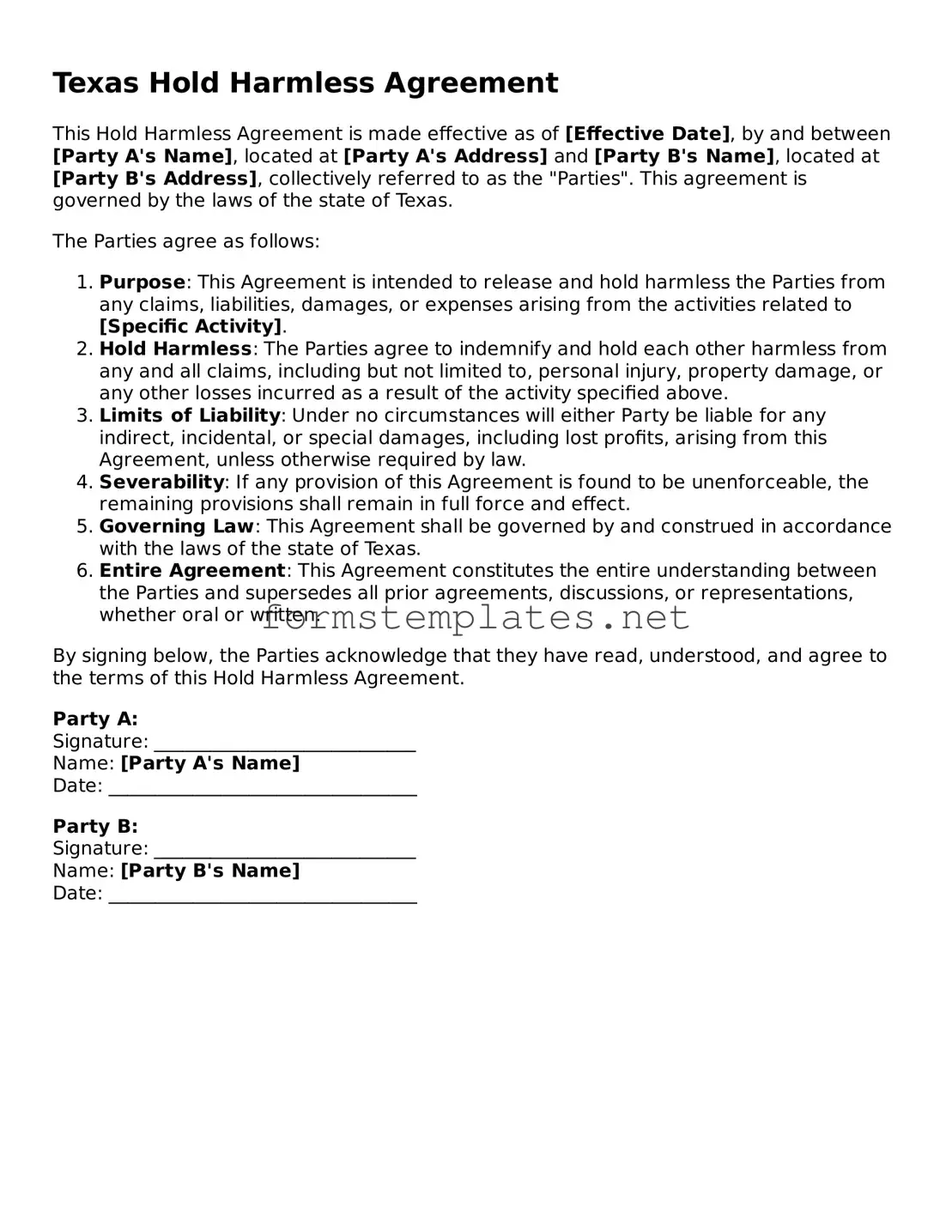Texas Hold Harmless Agreement
This Hold Harmless Agreement is made effective as of [Effective Date], by and between [Party A's Name], located at [Party A's Address] and [Party B's Name], located at [Party B's Address], collectively referred to as the "Parties". This agreement is governed by the laws of the state of Texas.
The Parties agree as follows:
- Purpose: This Agreement is intended to release and hold harmless the Parties from any claims, liabilities, damages, or expenses arising from the activities related to [Specific Activity].
- Hold Harmless: The Parties agree to indemnify and hold each other harmless from any and all claims, including but not limited to, personal injury, property damage, or any other losses incurred as a result of the activity specified above.
- Limits of Liability: Under no circumstances will either Party be liable for any indirect, incidental, or special damages, including lost profits, arising from this Agreement, unless otherwise required by law.
- Severability: If any provision of this Agreement is found to be unenforceable, the remaining provisions shall remain in full force and effect.
- Governing Law: This Agreement shall be governed by and construed in accordance with the laws of the state of Texas.
- Entire Agreement: This Agreement constitutes the entire understanding between the Parties and supersedes all prior agreements, discussions, or representations, whether oral or written.
By signing below, the Parties acknowledge that they have read, understood, and agree to the terms of this Hold Harmless Agreement.
Party A:
Signature: ____________________________
Name: [Party A's Name]
Date: _________________________________
Party B:
Signature: ____________________________
Name: [Party B's Name]
Date: _________________________________
